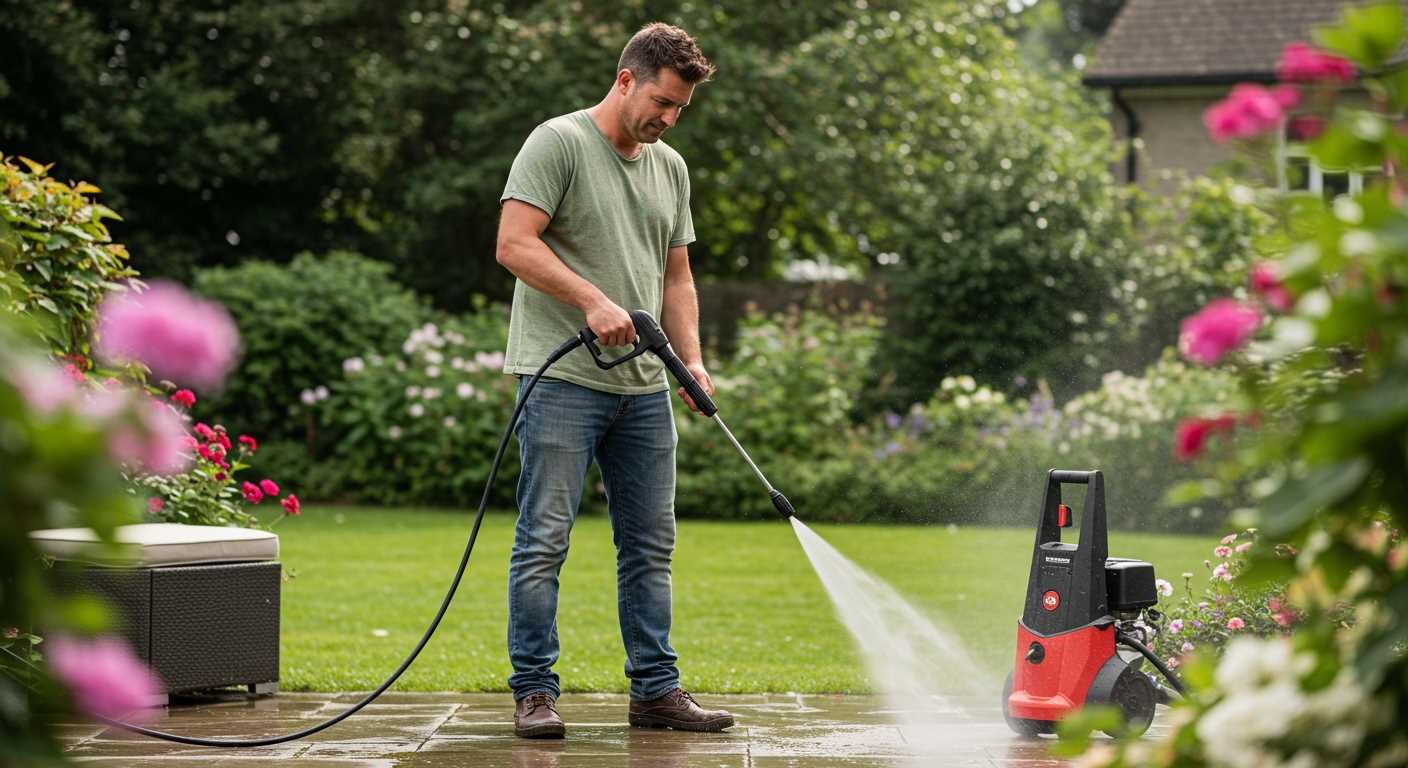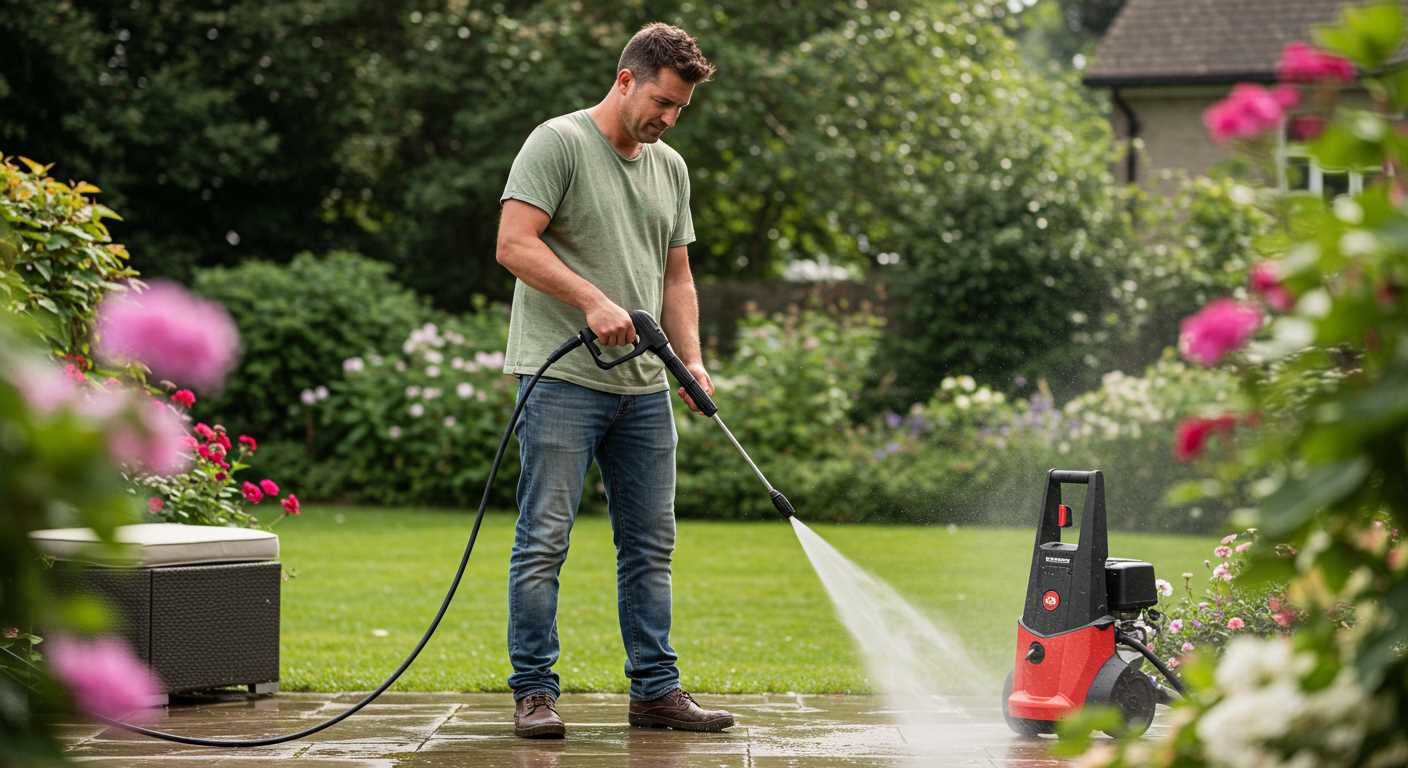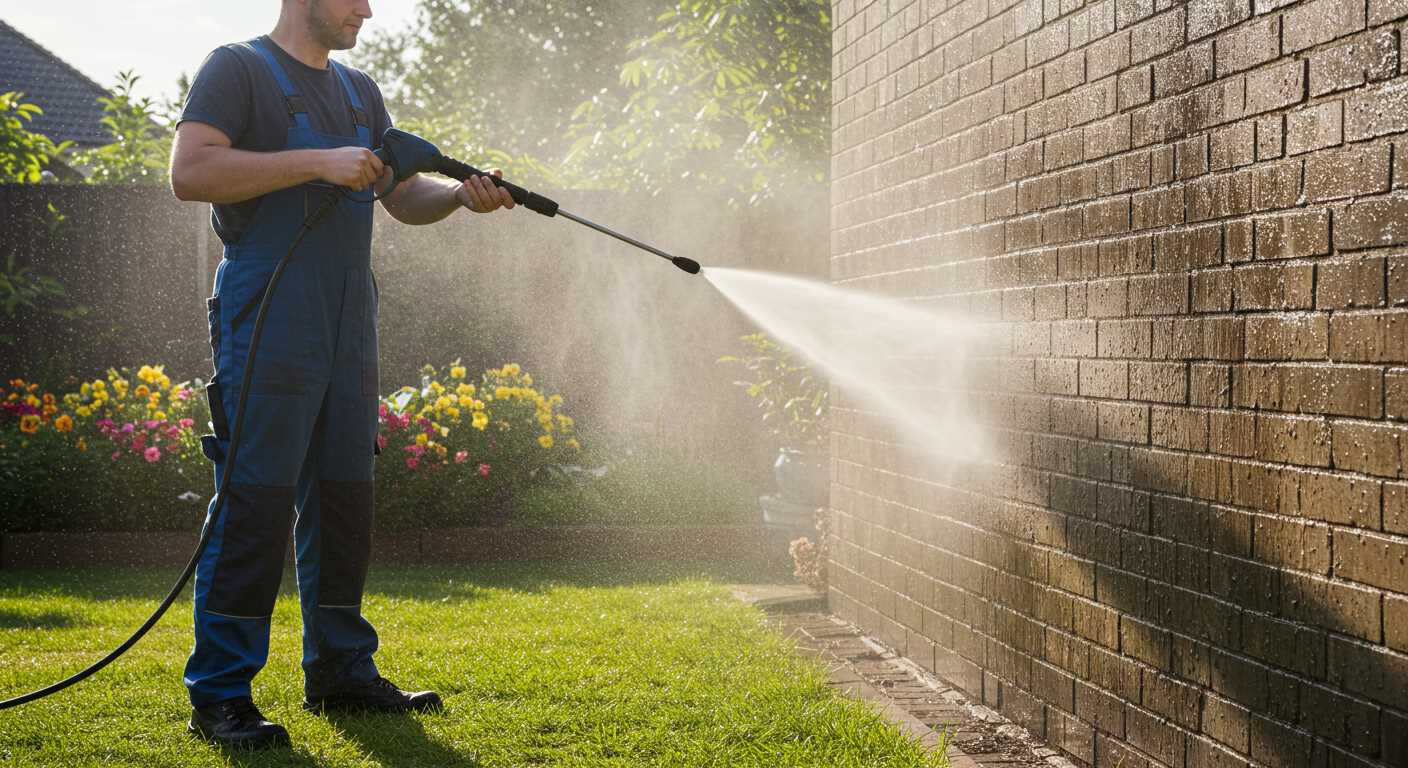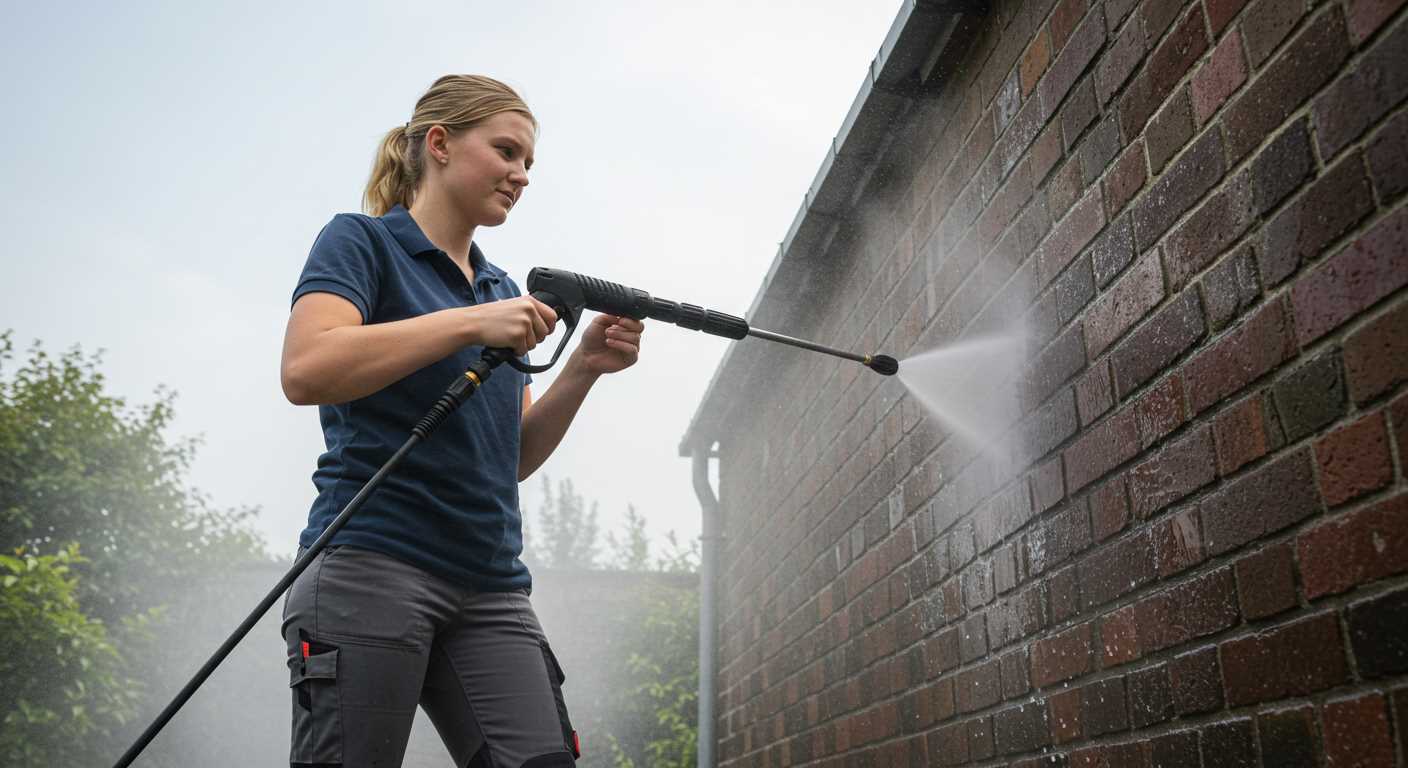




Direct application of high-pressure equipment on windows designed for easy maintenance is not advisable. The high force can damage the protective coatings, which are essential for their unique properties. These surfaces are engineered to repel dirt and grime, but that does not mean they are invulnerable to harsh treatments.
In my years of experience testing various cleaning apparatus, I’ve learned that gentler methods yield better results for these specialized surfaces. Instead of opting for a vigorous spray, consider using a soft cloth or a non-abrasive sponge coupled with a mild detergent. This approach preserves the integrity of the coating while ensuring cleanliness.
On one occasion, a client insisted on using a high-intensity stream on their newly installed glass. Despite my warnings, they proceeded and ended up with streaks and a damaged surface. This incident reinforced the importance of proper maintenance techniques for such glass types. Gentle cleaning methods not only maintain the aesthetic appeal but also extend the lifespan of the surface.
If stubborn spots persist, a diluted vinegar solution can work wonders. Always rinse thoroughly with water afterwards to prevent any residue from affecting the coating’s performance. Staying informed about the right cleaning practices will ensure that your windows remain in pristine condition for years to come.
Understanding Self Cleaning Glass Technology
Self-cleaning surfaces utilise a remarkable combination of photocatalytic and hydrophilic properties. The coating on the surface breaks down organic dirt using UV light, making it easier for rainwater to wash away the residues. This interaction reduces the need for traditional cleaning methods, promoting a clearer view without frequent maintenance.
When sunlight strikes the treated panels, a chemical reaction occurs that decomposes grime and pollutants. The hydrophilic aspect ensures that water spreads evenly across the surface, forming a thin layer that carries away dirt rather than leaving droplets that can dry and leave spots.
Regular maintenance is still beneficial. Occasional rinsing with water is advisable to prevent the build-up of grime, especially in regions with high pollution or during pollen seasons. Avoid applying abrasive materials or harsh chemicals, as these can damage the protective coating.
In environments with significant dust or industrial pollution, a gentle approach is recommended. High-powered methods might strip away the coating, compromising the surface’s self-cleaning capabilities. Always inspect the condition of the glass after cleaning to ensure the coating remains intact.
Understanding these features allows for better care and longevity of treated surfaces. It’s fascinating how modern technology transforms cleaning methods, making our lives a little easier while maintaining aesthetic appeal.
Risks of Using a High-Pressure Cleaner on Glass Surfaces
Direct application of high-pressure equipment on glass surfaces poses several risks that may lead to costly damage. Here’s a rundown of the potential issues:
1. Risk of Shattering
Glass, despite being designed for durability, has its limits. The intense force from a high-pressure stream can create stress points that lead to cracks or even shattering. This is particularly true for tempered glass, which may break into sharp shards, posing safety hazards.
2. Surface Damage
Even if the glass does not shatter, the high-velocity spray can strip away protective coatings or films. Many modern glass products incorporate special finishes that enhance their functionality. A strong jet may erode these features, diminishing their self-cleaning properties and requiring costly replacements.
3. Uneven Cleaning
High-pressure techniques may not provide uniform results. Areas of glass may remain dirty if the water stream is too focused or if the angle of approach is incorrect. This leads to streaking and unsightly patches, negating the purpose of the cleaning effort.
4. Injury Risks
In addition to damaging the glass, the use of high-force equipment increases the risk of personal injury. The unexpected shattering of glass can result in serious cuts or injuries. Additionally, if equipment slips or is mishandled, it can cause accidents.
5. Warranty Concerns
Many manufacturers specify that using high-pressure methods can void warranties. Before attempting any cleaning, it’s crucial to review the warranty terms of the glass. Ignoring these guidelines might lead to out-of-pocket expenses for repairs or replacements.
For those seeking alternatives to effectively clean outdoor spaces without risking glass surfaces, consider exploring options like pressure washer for a wooden patio cleaning. Such solutions may offer safer cleaning methods while preserving the integrity of glass installations.
Recommended Pressure Settings for Cleaning
A setting between 1000 to 1500 PSI is ideal for delicate surfaces like treated panes. This range provides sufficient force to remove dirt and grime without risking damage. Higher settings can shatter or scratch the surface, leading to costly repairs.
When selecting a nozzle, opt for a wider spray pattern, such as 25 or 40 degrees. These nozzles disperse water over a larger area, reducing the impact pressure on the surface. Narrower nozzles can concentrate the force too intensely, increasing the likelihood of harm.
In my experience, starting at the lowest recommended setting is wise. Gradually increase the pressure if necessary, ensuring no adverse effects occur. This cautious approach has saved me from mishaps and unwanted repairs in the past.
| Pressure Setting (PSI) | Nozzle Type | Application |
|---|---|---|
| 1000 – 1500 | 25° or 40° | Delicate surfaces |
| 1500 – 2000 | 15° | Moderate dirt |
| 2000+ | 0° or 15° (only for sturdy surfaces) | Heavy-duty cleaning |
Always maintain a distance of at least 12 to 18 inches from the surface being cleaned. This distance further mitigates the risk of damage while still providing effective cleaning. Regularly check for any signs of wear on the equipment; a malfunctioning machine can result in unpredictable pressure levels.
In conclusion, meticulous attention to settings and techniques ensures a safe and effective cleaning process, preserving the integrity of treated surfaces while achieving desired results.
Suitable cleaning solutions for self cleaning glass
For optimal maintenance of coated surfaces, a mild pH neutral solution works best. Look for products specifically formulated for delicate finishes. Avoid harsh chemicals or abrasive cleaners that can damage the coating. A simple mix of warm water and a few drops of gentle dish soap can effectively remove residue without harming the surface.
Natural alternatives
Vinegar is a fantastic natural option for routine cleaning. Dilute it with water in equal parts and apply with a soft cloth. The acidity helps break down grime while being safe for the special coating. Always rinse with clean water after application to prevent any residue.
Commercial products
When selecting commercial cleaners, ensure they are labelled safe for coated surfaces. Brands that specialise in glass care often have dedicated products that enhance the performance of the coatings. Regular applications will help maintain their effectiveness over time. For detailed guidance on handling various kitchen tasks, check out how to can corn without pressure cooker.
Step-by-step guide for pressure washing
Begin with the right equipment. Gather a reliable machine with adjustable pressure settings, a suitable nozzle, and a cleaning solution recommended for treated surfaces. Ensure safety gear is on: goggles and gloves are a must.
Next, prepare the area. Remove any obstacles near the windows, including potted plants or furniture. Double-check to ensure the surface is free from dirt and debris; this prevents scratches during the washing process.
Setting up your machine
Attach the appropriate nozzle for a gentle spray; a wide fan pattern reduces the risk of damage. Set the pressure to a lower level, typically around 1000-1200 PSI. This range is ideal for delicate surfaces while still providing sufficient cleaning power.
Mix the cleaning solution as per the manufacturer’s instructions. Ensure it’s suitable for treated surfaces. Fill the detergent tank if your device has one, or use a separate container for manual application.
Washing technique
Start from the top of the surface and work your way down. This method allows dirty water to flow down without streaking. Maintain a distance of at least 2-3 feet from the surface to avoid any potential damage. Move the nozzle in a sweeping motion, overlapping each pass slightly for even coverage.
After applying the cleaning solution, let it sit for the recommended time to allow for effective dirt breakdown. Rinse thoroughly with clean water using the same sweeping technique, ensuring all detergent is washed away to prevent residue buildup.
Finally, check for any missed spots. If necessary, repeat the process on those areas. Once satisfied with the results, allow the surface to dry naturally, avoiding any potential scratching from cloths or towels.
Alternative cleaning methods for self cleaning glass
One effective approach involves using a soft cloth or microfiber towel combined with warm water and a mild dish soap solution. This method gently lifts dirt and grime without scratching the surface. During my years in the cleaning equipment industry, I discovered that many homeowners overlook the power of simple, non-abrasive materials.
Another option is employing a squeegee with a gentle cleaning solution. This tool can remove streaks and water spots while maintaining the integrity of the surface. I recall a demonstration where we compared various tools, and the squeegee consistently outperformed harsher methods.
For more stubborn stains, a mixture of vinegar and water can work wonders. The acidity in vinegar breaks down mineral deposits, leaving a spotless finish. I once had a client who swore by this combination, claiming it was the secret to their pristine windows.
Using a soft-bristled brush is also advantageous for tackling corners or hard-to-reach areas. I remember testing different brushes, and those with pliable bristles were the best at preventing scratches while efficiently removing dirt.
Lastly, consider using an extension pole for higher windows. This not only ensures safety but also provides better reach without risking damage to the surface. During a project, I utilised this method and was astonished by how much easier it made the cleaning process.
FAQ:
Is it safe to use a pressure washer on self-cleaning glass?
Using a pressure washer on self-cleaning glass is generally not recommended. While self-cleaning glass is designed to repel dirt and grime, high-pressure water can potentially damage the surface. The force of the water could strip away the special coating that gives the glass its self-cleaning properties. It’s best to clean this type of glass using gentler methods, such as a soft cloth or sponge with mild soap and water.
What are the risks of using a pressure washer on self-cleaning glass?
The main risks of using a pressure washer on self-cleaning glass include damaging the coating that helps keep the glass clean and potentially causing cracks or chips in the glass itself. The high pressure can create stress on the glass, especially if there are existing imperfections. To maintain the integrity of the glass and its self-cleaning features, it is advisable to avoid using high-pressure methods altogether.
What are the best methods for cleaning self-cleaning glass without a pressure washer?
The best way to clean self-cleaning glass is to use a soft sponge or cloth with warm, soapy water. You can also use a dedicated glass cleaner that is gentle and safe for treated surfaces. For tougher stains, a mixture of vinegar and water can be effective. Always ensure to rinse the glass thoroughly with clean water after cleaning to prevent any residue from remaining.
Can self-cleaning glass be damaged by other cleaning methods?
Yes, self-cleaning glass can be damaged by certain cleaning methods. Abrasive cleaners or pads can scratch the surface, and harsh chemicals can degrade the special coating. It’s important to use soft cleaning materials and products specifically designed for glass. Always check the manufacturer’s guidelines for the best cleaning practices to ensure the longevity of the self-cleaning properties.




.jpg)


